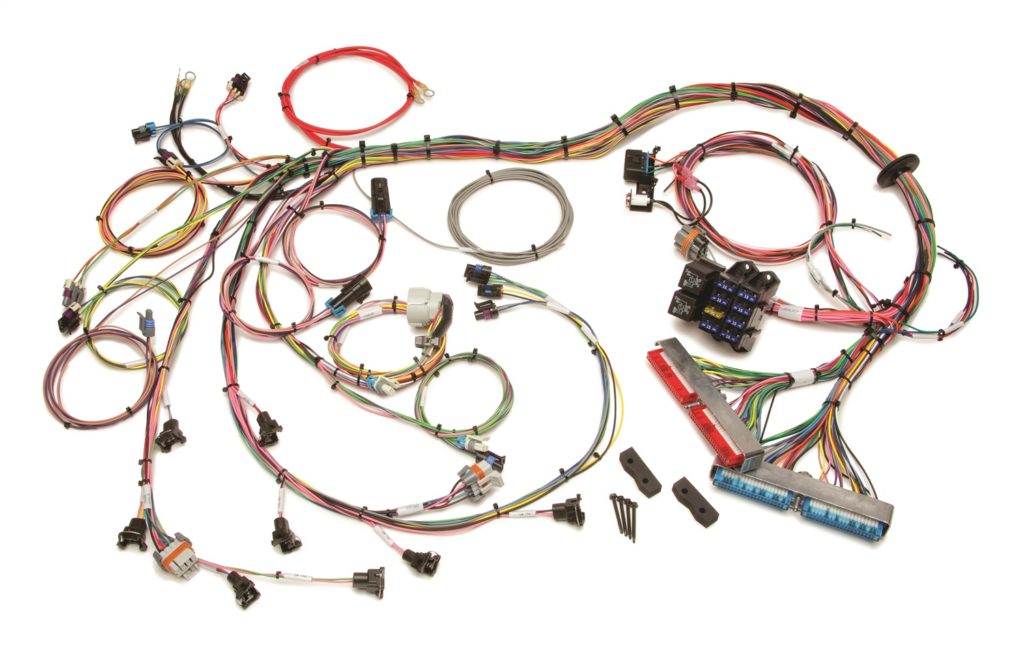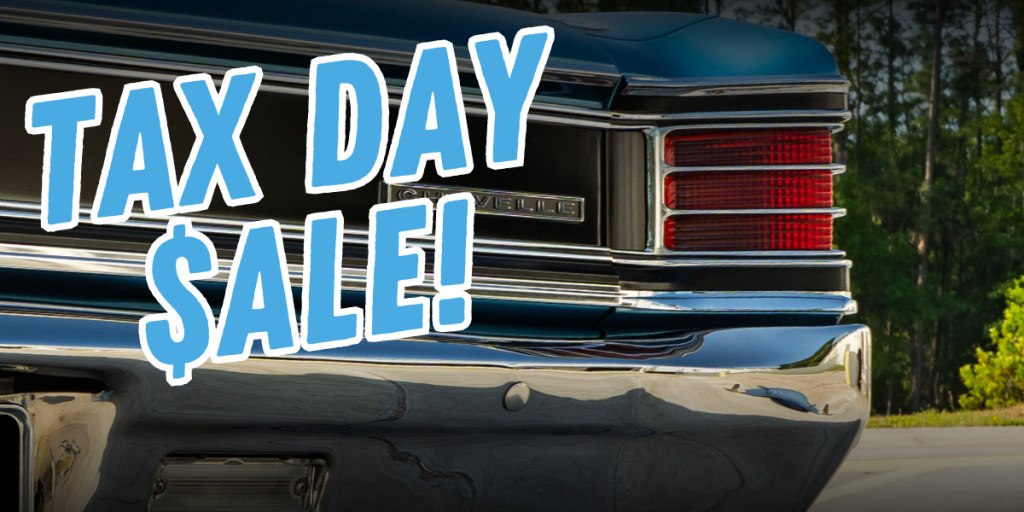LS Engine Swaps: What You Need To Know
What does it take to install an LS engine? Exactly how hard is it? Can you reuse some parts from your Small-block or Big-block? Do you have to modify anything?
These are all common questions that we see from people considering swapping to an LS engine. There’s no doubt that LS engines are the new Small-block; they are being installed into just about anything you can imagine.
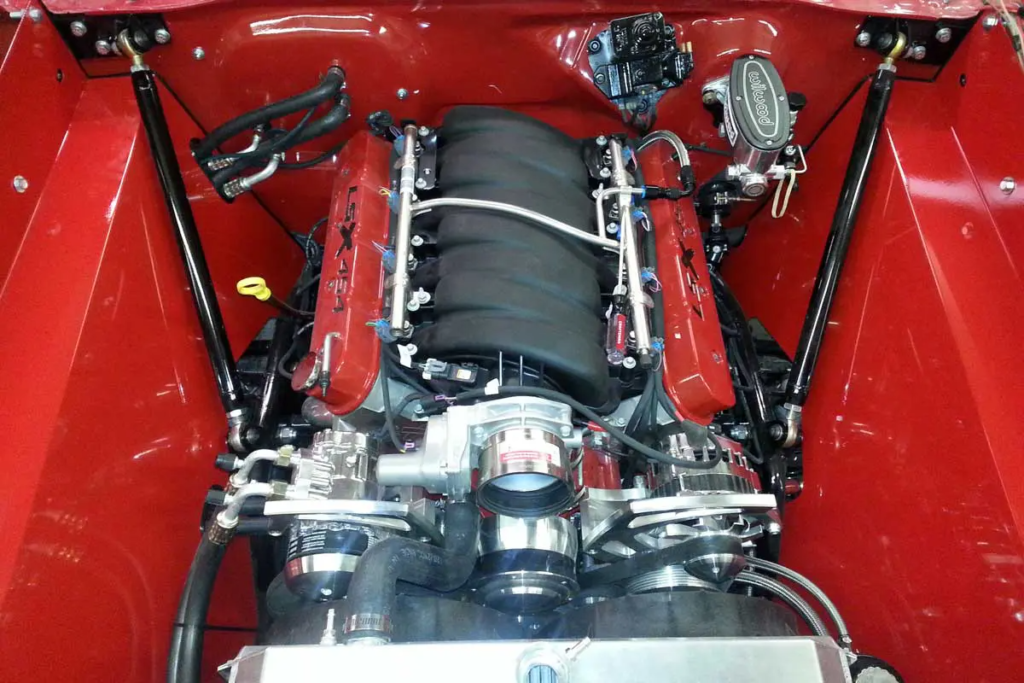
Since this is a popular swap, a lot of the hard work has already been figured out. You can make this a bolt-in swap now. Like the old saying though, there are many ways to skin a cat. Swapping an LS is no different, lots of options depend on your budget and skill level.
LS Engine Selection
The first step will be acquiring an LS engine! Luckily GM has made millions of these so finding one is pretty easy. But that brings up the question of which one?
The displacement of the LS doesn’t affect its physical size for the most part. Any of them from 4.8, 5.3, 6.0, and 6.2 will be the same dimensions. And luckily they will all fit into your classic Nova, Camaro, Chevelle, or G-Body.

Junkyard: Going to a junkyard, or Facebook marketplace can net you an LS engine easily. If you’re on a budget, a basic 5.3L from a truck will work great. These can be had for less than $1000 usually. When buying one, try to buy one that’s complete with all the wiring, sensors, and accessories. Some of it can be reused saving you hundreds later on.
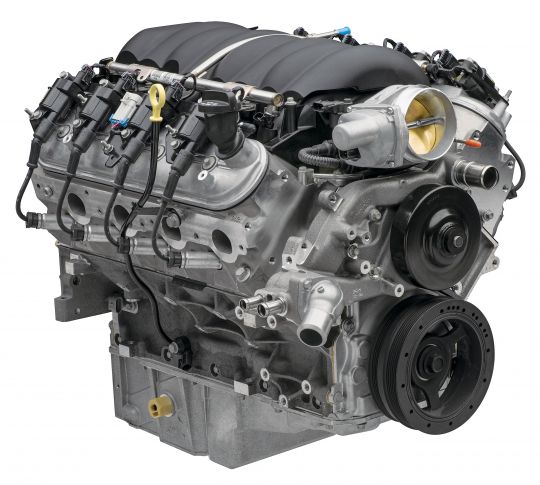
Crate LS Engine: Another route is a crate engine. With these, you know exactly what you’re getting and what condition it’s in. Often times they come with a warranty and technical support. These will often come built with higher compression and bigger camshafts to pump out more horsepower.
Bolting In An LS Engine
The dimensions of an LS are similar to that of a small-block or big-block, so they fit relatively easily inside the engine compartment of your classic Chevy. What you’ll need to accomplish this is generally two different things. First, a set of motor mounts, and second, a new oil pan.
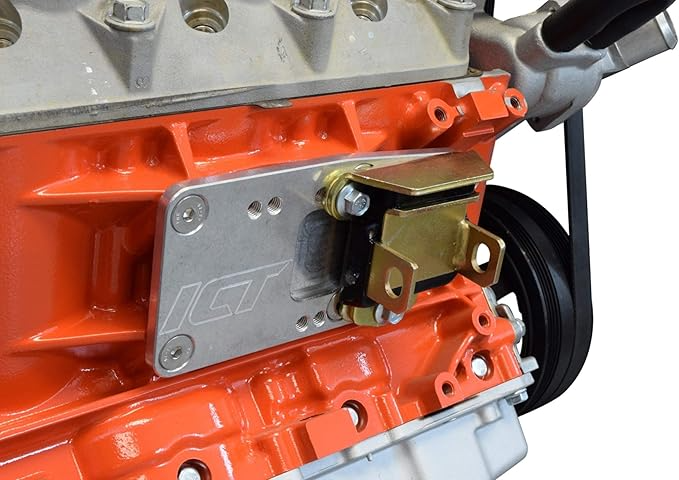
For motor mounts, most kits utilize an adapter that converts the LS mounts to small-block Chevy mounts. This makes the mounts cheap and plentiful. Then companies such as Holley make the frame mounts that usually bolt right in.

The oil pan that comes on most LS engines from the junkyard won’t quite work. More of than not, the sump part of the pan is much too deep which puts it too close to the ground. We have several different options to choose from for low-profile oil pans that will help clear the ground and steering linkage. Check them out here.
LS Intake and Accessories
The options for an intake manifold and accessory drive are almost endless. In some cases, the accessory drive from the engine will fit and clear everything. More often than not, things have to be moved around to get the clearance you’ll need. You can pick up a completely new set, or you can often find brackets to move things around for the clearance you’ll need.

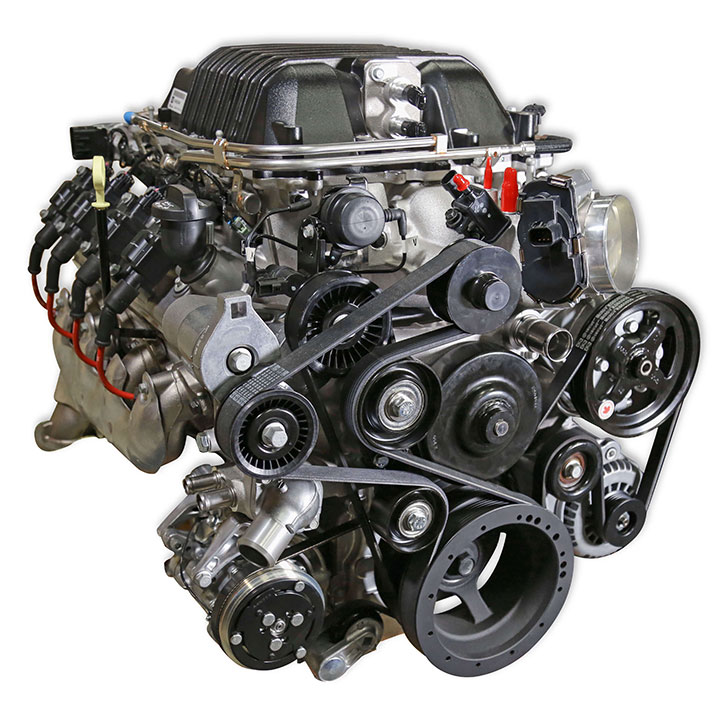
There are lots of intake manifolds from plastic to sheet metal, to cast aluminum. Which one you choose largely depends on your goals with the engine and what kind of space you have under the hood.
LS Fuel Supply
Your LS engine will need a high pressure fuel pump, unless you go with a traditional carburetor. The small in-line pump you might have to supply fuel to a carb won’t suffice. There are two kinds of pumps to accomplish this, an in-line pump, or an in-tank pump. Whichever you choose, you’ll need all-new fuel lines to support that amount of fuel.
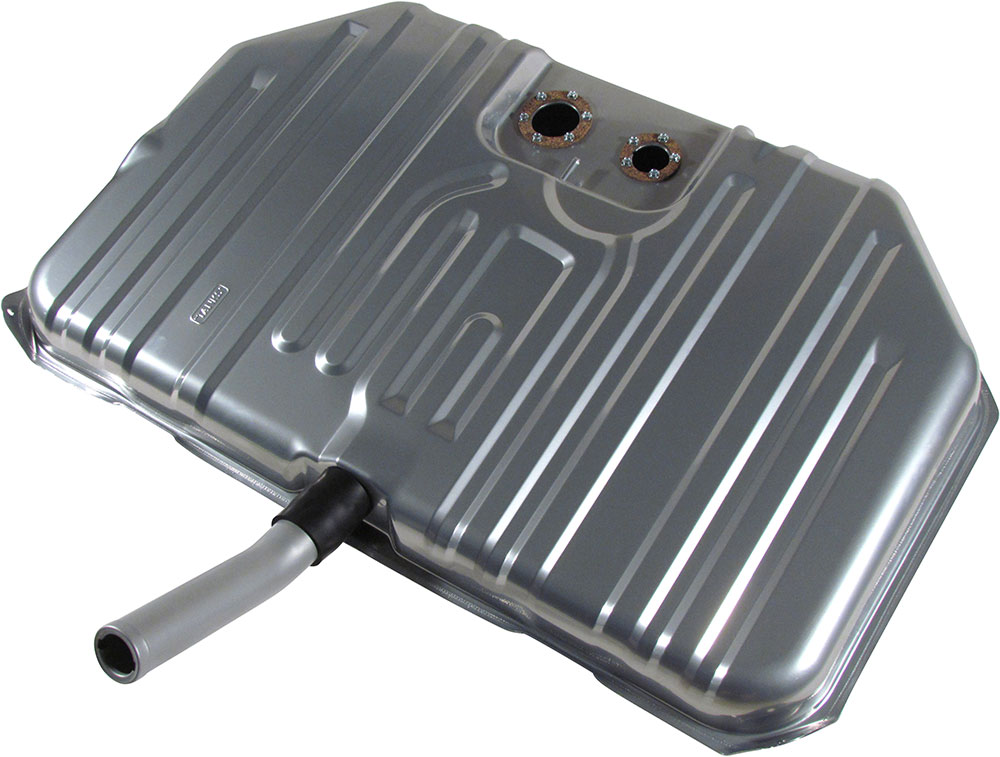
Often times an in-line fuel pump is the easier route to go. You can use your stock tank and have a sump of some sort put on the bottom of it. In-line pumps can overheat more easily and cause issues.
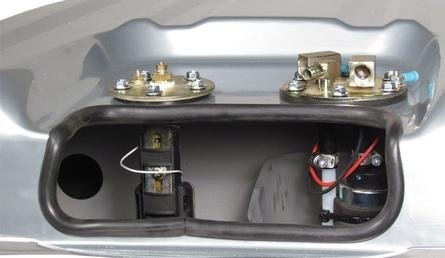
The other option is an in-tank pump. You can retrofit a pump into a tank, or buy a new tank that has provisions for a pump to be installed already. While this might be a bit more money, it’s the better and more reliable setup.
LS Engine Cooling System
That’s not to say that you can’t reuse your original radiator and figure out some hoses to make it work. Most of the time LS engines will utilize electric fans. For most, it’s easier to pick up a new radiator and fan combo than try to cobble together something from their stock cooling system.
LS Exhaust Systems
With an LS comes new exhaust manifolds or headers. Small-block or big-block won’t fit or work. There’s no reason the rest of the exhaust system can’t be used though.
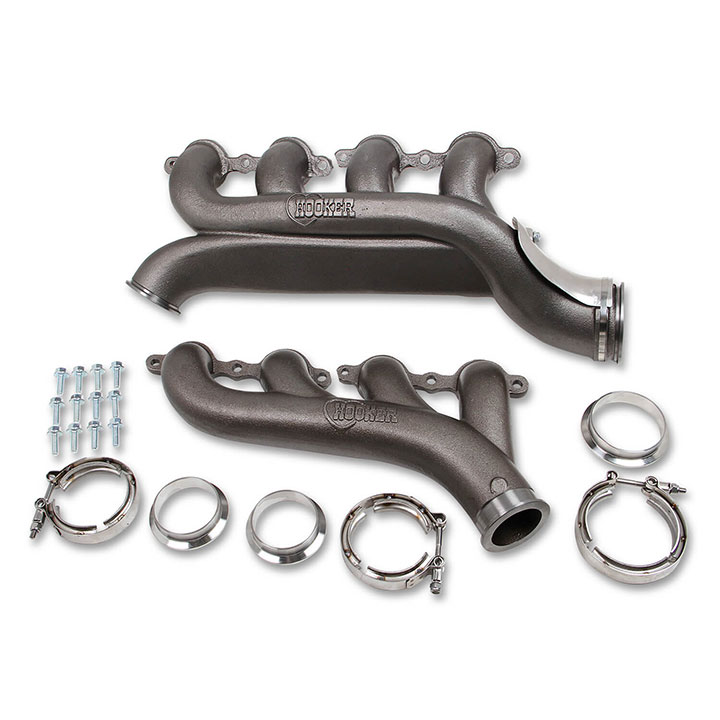
Luckily for manifolds and headers, there are a lot of options out there. If you want more of a stock-type look or if you’re hurting for space, there are updated manifolds. If you prefer more of a performance exhaust, there are tons of header options. From universal LS headers to vehicle-specific LS headers.
LS Electrical Computers
One big thing about LS engines is that they are run with a computer. There’s no distributor to fire off the coils. Something has to tell the injectors to fire at the right time and the right amount. But this issue has been solved as well.
There are a few different ways to go about adding a computer to run the engine as well. All of them have their pros and cons.
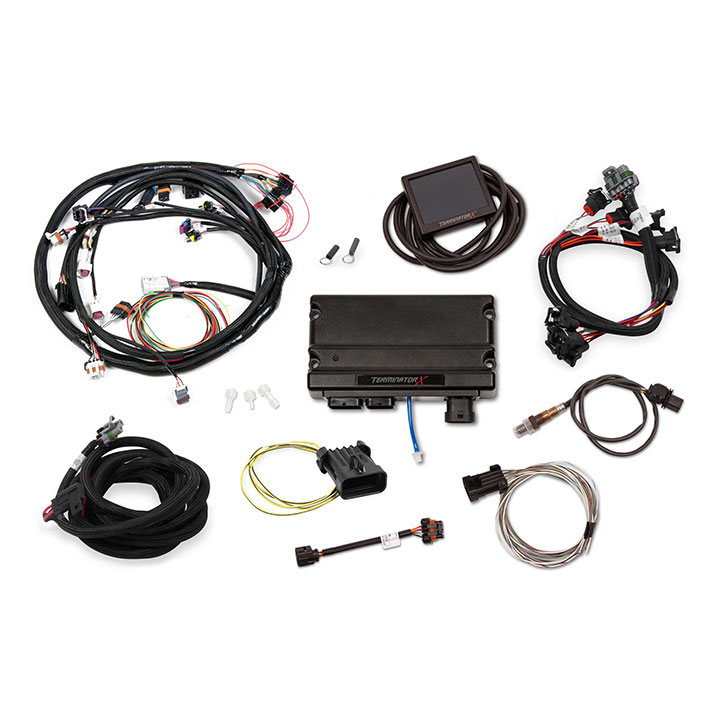
Holley Terminator: This is one of the most popular options. This comes with the computer and complete wiring harness. The beauty of these is that the computer can ‘self-tune’, to a degree. Professional tuning is still recommended. But tuning it requires a laptop and a program provided by Holley, making it a simple process.
Stock Computer: This is the other major route. When getting a junkyard engine, most will grab the computer as well. These computers are pretty much bulletproof. To tune them though is a bit more complex and requires paying for a special program to do so. Most of the time tuning requires somebody coming to your car, or you taking it to a shop.
Going this route also requires a wiring harness. You can reuse the factory one, but it would require removing wires to clean it up and make it all work properly. Or you could pick up a new wiring harness that would work with the stock computer. This option is generally more cost-effective than the Holley version, but at the sacrifice of some convenience.
LS Engine Swaps
Swapping a modern LS into your classic doesn’t have to be a hard process. It’s something that’s already been done and perfected. The hard part is figuring out how you want to go about it. Easier usually means more expensive as you’re buying pieces to make it work. Cheaper usually means harder as you’re figuring out or fabricating things to make it all work.
No matter what route you go with, we are here to help and answer any questions you might have. For our full line of LS Swap components visit SS396.com and give our friendly techs a call at (203) 235-1200!


